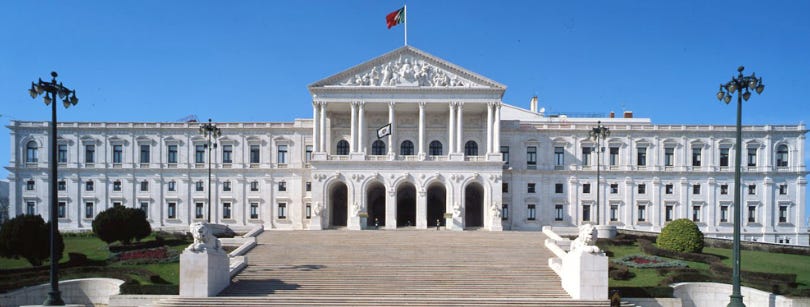I don’t know about you, but I don’t recall a lot from my civics class. If we covered the most common forms of governance for democratic republics, I must have slept through that class. More likely, I suspect my teachers had the U.S. as the center of the universe and the only thing worth studying mentality.
Republic Day
Tuesday, 5 October was Republic Day here in Portugal. It is one of many official holidays in Portugal. It commemorates the establishment of the republic when in 1910 the monarchy which had been in power since the 11th century was overthrown in a bloodless coup. If you have been reading for a while, you know that this first republic only lasted for 16 years until 1926 when a military dictatorship was installed. Then we had Salazar and his successor, and yet another bloodless revolution in 1974. I love the idea of a bloodless revolution…don’t you.
Anyway, again since I wasn’t listening in civics class, I had to look up the definition of a republic. (Please note I am not proud of this fact … but I will always be honest even when it makes me appear uneducated.) Low and behold, a republic means the citizens vote for their representatives. Easy, peasy … or at least it is supposed to be. (More on this point on Wednesday.)
Presidential vs Parliamentary
But again, back to civics class, I don’t recall a lot of discussion about parliamentary government … the most prevalent form of republican government in the world. In fact, when talking with our Scottish friends I was often confused when they talked about “The Government” which meant something entirely different to them than to me. They were kind enough to get us passes to visit Parliament in 2019. They contacted their MP who arranged for the tour. A few years earlier I had contacted our Senator to get passes for them to take a Capital tour. Do they do that anymore? Since January, I mean…but I digress.
If you slept through civics let me provide the cliffnotes version:
In a parliamentary government, the leader of the government is part of the legislator often called the Prime Minister. In a presidential system, the leader of the government is separate from the legislature.
In the U.S. we elect a President along with members of Congress. In Portugal and other countries with parliamentary governments, Members of Parliament are elected who then choose the Prime Minister. The party with the majority selects the Prime Minister.
Members of Parliament and the Prime Minister do not have term limits, however, they can be removed immediately if there is a no-confidence vote.
In the States, the President can’t serve for more than 8 years, in Portugal 10 years … Members of Congress can serve forever, and you are basically stuck with the guy. (Sure there are protective mechanisms in place, but we all know you can pretty much do anything and remain in office.) And as has been statistically shown, gerrymandering pretty much ensures you are stuck with your representatives forever.
The President
We had lunch with a new Portuguese friend last week. Since I was researching this topic I asked her what she thought of her government. Frankly, she didn’t have many good things to say. In fact, she referenced things that were better under Salazar. “Sure we had no freedom and could get thrown in jail for speaking out, but some things worked.” Corruption, favoritism, too many taxes … were her common themes. Basically, I got the impression that all Portuguese politicians were crocks and nobody liked them. So I asked, “But what about the President? Didn’t he get more than 60% of the vote?”
“Oh, we love the President. He is a good guy. But he has no power. He is a figurehead. He can veto legislation, but it is easily overridden.”
She then went on to talk about the percentage of the electorate that actually vote and the fact that there were so many parties that a small percentage of a small percentage could be elected. Her comments, got me thinking about political parties…voting rights…representation, and more. But if you want to learn more about that and the People, Animal, Nature (PAN) party … yes there is such a party and they hold seats in Parliament, you will have to come back on Wednesday.







Love it!!
Actually, a US President can serve more than 8 years. Think Truman. He finished the term of FDR and was elected for two terms of 4 years each. A President can be elected for only 2 terms. Just saying……